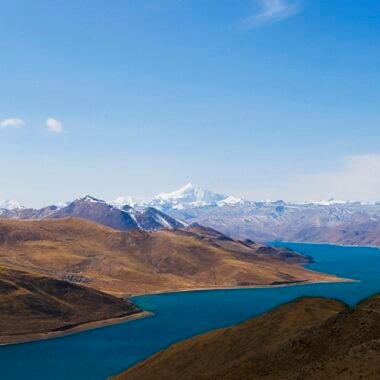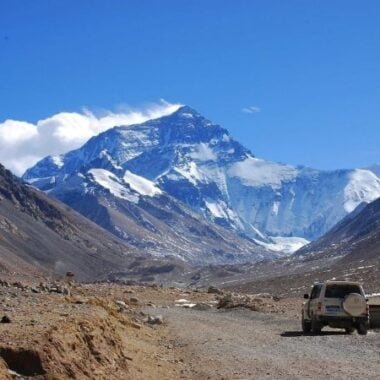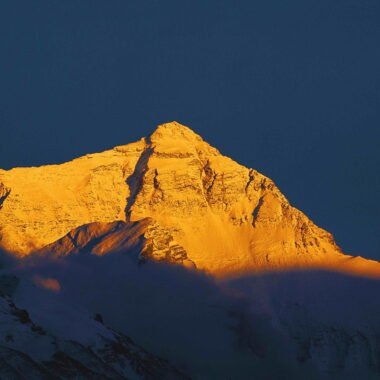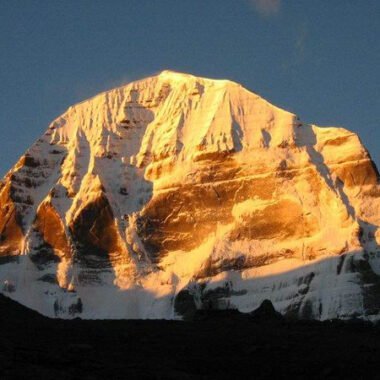Conquering Tibet’s High Altitudes: Health Warnings for Everest and Beyond
Tibet’s iconic destinations—Mount Everest Base Camp (5,200m) and Lake Namtso (4,718m)—offer unparalleled adventures, but the thin air and rugged terrain demand serious…
Tibet’s iconic destinations—Mount Everest Base Camp (5,200m) and Lake Namtso (4,718m)—offer unparalleled adventures, but the thin air and rugged terrain demand serious physical and medical preparation. Whether you’re a trekker or a scenic traveler, this guide ensures you’re ready to safely embrace Tibet’s “Roof of the World.”
Fitness Requirements for Tibet Travel
1. Cardiovascular Endurance
- Why: High altitude reduces oxygen by 40–50% compared to sea level.
- Training plan:
- 8–12 weeks pre-trip: Daily 45-minute brisk walks or cycling.
- Weekly: 2–3 sessions of stair climbing/hiking with a weighted backpack.
2. Strength & Stability
- Focus areas:
- Legs: Squats, lunges (for uneven Himalayan trails).
- Core: Planks (to manage heavy daypacks).
3. Altitude Simulation (Optional but Effective)
- Use gym hypoxic masks or spend weekends at 2,000m+ elevations if possible.
Health Conditions That May Prevent Tibet Travel
⚠️ Strictly avoid Tibet if you have:
- Severe cardiovascular diseases: Uncontrolled hypertension, heart failure, or recent heart surgery.
- Chronic respiratory issues: Advanced COPD, pulmonary fibrosis.
- Pregnancy: High-altitude hypoxia risks fetal development.
⚠️ Consult a doctor if you have:
- Controlled asthma or diabetes: Carry extra inhalers/meds and a glucose monitor.
- Sleep apnea: May worsen with altitude; consider a portable CPAP.
- History of blood clots: Altitude + long drives increase thrombosis risk.
Altitude Sickness: Prevention & Emergency Response
1. Pre-Trip Prep
- Medication:
- Acetazolamide (Diamox): Start 24h before ascent (125mg twice daily).
- Ibuprofen: For altitude headaches (avoid sedatives!).
- Supplements: Iron-rich foods or tablets to boost hemoglobin.
2. Acclimatization Rules
- First 48 hours in Lhasa (3,650m):
- No alcohol/caffeine.
- Light activities only.
- Ascend gradually: Limit elevation gain to 300–500m per day above 3,000m.
3. Recognizing AMS (Acute Mountain Sickness)
- Mild symptoms (headache, nausea): Rest, hydrate, and halt ascent.
- Severe signs (blue lips, confusion): Descend immediately—carry emergency oxygen.
Packing Checklist for Health Safety
- Mandatory:
- Diamox + personal medications (extra 3-day supply).
- Pulse oximeter to monitor SpO2 (aim >85%).
- Reusable water bottle (stay hydrated; 3–4L daily).
- Recommended:
- Canned oxygen (buy in Lhasa; avoid airport安检 issues).
- High-calorie snacks (nuts, chocolate) for energy crashes.
Special Advice for Everest Base Camp (EBC)
- Temperature extremes: Nights drop to -10°C (Oct–Apr); pack layered thermal wear.
- Helicopter evacuation insurance: Required for most EBC tours.
Final Tips
- Medical certificate: Many Tibet tour operators require a doctor’s note for travelers over 60.
- Mental readiness: Altitude can cause anxiety; practice mindfulness breathing pre-trip.
Relevent Articles:
- Tibet Altitude Guide: Main Towns and Key Attractions for a Perfect Journey
- The Best Way to Travel Tibet: Acclimatization and Routes
- Preparing for High Altitude in Tibet











